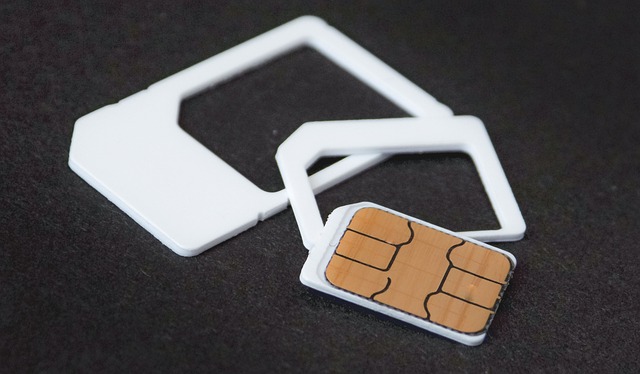Everything you need to know about neuropathy treatment
Neuropathy affects millions of people worldwide, causing pain, numbness, and decreased quality of life. This complex neurological condition requires comprehensive understanding of available treatments, from medications to lifestyle modifications. Whether you're newly diagnosed or seeking alternative options, understanding the full spectrum of neuropathy treatments can help you make informed decisions about your healthcare journey.

Neuropathy is a condition that affects the peripheral nerves, causing symptoms ranging from mild tingling to debilitating pain. It can result from various causes including diabetes, chemotherapy, infections, or traumatic injuries. With approximately 20 million Americans suffering from some form of neuropathy, finding effective treatment options is crucial for maintaining quality of life. This article explores the various treatment approaches, their associated costs, and where to seek specialized care.
What are the main neuropathy treatment options?
Treatment for neuropathy typically follows a multi-faceted approach, addressing both symptom management and underlying causes. Medication therapy often forms the first line of defense, with options including anticonvulsants like gabapentin and pregabalin that help calm overactive nerves. Antidepressants such as duloxetine and amitriptyline are frequently prescribed, not primarily for mood but for their ability to modify pain signals. For severe cases, opioid medications might be considered, though typically only for short-term use due to dependency concerns.
Beyond medications, physical therapy plays a crucial role in maintaining muscle strength, improving coordination, and potentially reducing pain. Many patients benefit from transcutaneous electrical nerve stimulation (TENS), which delivers small electrical impulses to interfere with pain signals. Alternative therapies such as acupuncture, massage therapy, and cognitive behavioral therapy have shown promise for some patients, particularly when integrated with conventional treatments.
For cases where conservative management proves insufficient, interventional procedures may be recommended. These include nerve blocks, where medication is injected near affected nerves to interrupt pain signals, or spinal cord stimulation, which involves implanting a device that sends mild electrical pulses to mask pain signals before they reach the brain.
How much does neuropathy treatment cost?
The financial aspect of neuropathy treatment varies widely depending on the type of therapy, insurance coverage, and geographic location. Medication costs can range significantly, with generic anticonvulsants like gabapentin potentially costing $30-100 per month, while newer medications like Lyrica (pregabalin) might cost $300-500 monthly without insurance coverage. Physical therapy sessions typically range from $75-150 per session, with most treatment plans requiring 8-12 sessions.
For more advanced interventions, costs increase substantially. Nerve blocks may cost $500-1,500 per injection, while spinal cord stimulator implantation can range from $20,000-50,000, including the device and surgical procedure. Insurance coverage varies widely for these procedures, with many plans covering a percentage after deductibles are met.
| Treatment Type | Average Cost Without Insurance | Average Cost With Insurance |
|---|---|---|
| Oral Medications (monthly) | $30-500 | $5-100 copay |
| Physical Therapy (per session) | $75-150 | $20-50 copay |
| TENS Unit | $30-250 | Partially covered |
| Nerve Block Injection | $500-1,500 | $100-500 after deductible |
| Spinal Cord Stimulator | $20,000-50,000 | $5,000-15,000 after deductible |
Prices, rates, or cost estimates mentioned in this article are based on the latest available information but may change over time. Independent research is advised before making financial decisions.
Where are specialized neuropathy treatment hospitals located?
Several medical institutions across the United States have developed specialized centers for neuropathy treatment. The Mayo Clinic, with locations in Minnesota, Arizona, and Florida, offers comprehensive neuropathy care with multidisciplinary teams including neurologists, pain specialists, physical therapists, and researchers pioneering new treatments. Johns Hopkins Neurology and Neurosurgery department in Baltimore provides specialized peripheral nerve clinics with cutting-edge diagnostic and therapeutic approaches.
Cleveland Clinic’s Neurological Institute features a dedicated Peripheral Nerve Center that combines expertise from neurology, neurosurgery, and rehabilitation medicine. Massachusetts General Hospital in Boston houses the Peripheral Nerve Center that specializes in both common and rare neuropathic conditions. For those on the West Coast, UCSF Medical Center’s Neuropathy Center offers advanced diagnostic testing and personalized treatment plans.
Many academic medical centers have established Centers of Excellence for neuropathy, particularly those focused on diabetic neuropathy, which represents the most common form of the condition. These specialized centers typically offer more advanced diagnostic capabilities, including skin biopsies for small fiber neuropathy and quantitative sensory testing that may not be available at community hospitals.
What lifestyle modifications help manage neuropathy?
Beyond medical interventions, lifestyle modifications play a crucial role in managing neuropathy symptoms and potentially slowing disease progression. Blood glucose control is paramount for diabetic neuropathy patients, as maintaining target glucose levels can prevent further nerve damage. Regular moderate exercise helps improve circulation to the extremities, potentially reducing neuropathic pain and improving muscle strength.
Nutritional approaches show promise as well. A balanced diet rich in B vitamins, particularly B12, B6, and folate, supports nerve health. Some patients benefit from alpha-lipoic acid supplements, which may help reduce oxidative stress on nerves. Limiting alcohol consumption is advisable, as excessive alcohol can directly damage nerves and worsen symptoms.
Proper foot care becomes essential, especially for those with reduced sensation in the feet. Daily inspection for cuts or injuries, wearing properly fitted shoes, and regular visits to a podiatrist can prevent complications that might otherwise go unnoticed due to reduced sensation.
How effective are emerging neuropathy treatments?
Research into neuropathy treatments continues to evolve, with several promising approaches on the horizon. Gene therapy aims to address the underlying genetic causes of certain neuropathies by delivering corrective genetic material to affected nerves. Stem cell therapy, while still experimental for neuropathy, shows potential for nerve regeneration and symptom improvement in preliminary studies.
Monoclonal antibodies targeting specific inflammatory pathways are being investigated for immune-mediated neuropathies. These treatments could provide more targeted approaches with fewer side effects than current immunosuppressive therapies. Advanced neuromodulation techniques, including dorsal root ganglion stimulation and peripheral nerve stimulation, offer more precise pain control than traditional spinal cord stimulation.
Virtual reality therapy represents an innovative approach to pain management, potentially helping patients develop coping strategies and pain distraction techniques without medication. As these treatments move through clinical trials, they may provide additional options for patients who haven’t responded well to conventional approaches.
This article is for informational purposes only and should not be considered medical advice. Please consult a qualified healthcare professional for personalized guidance and treatment.




